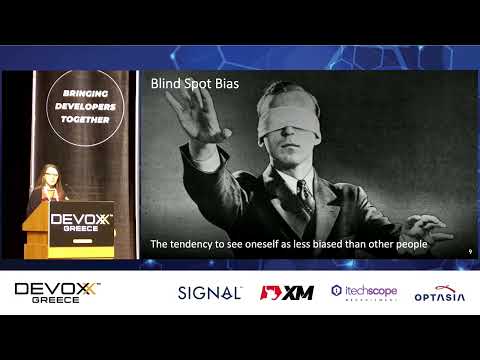Description:
Save Big on Coursera Plus. 7,000+ courses at $160 off. Limited Time Only!
Grab it
Explore cognitive science and psychology principles to enhance UX design in this 36-minute Devoxx conference talk. Delve into how the human brain uses mental shortcuts to interpret complex information, leading to cognitive biases. Learn about System 1 thinking, Blind Spot Bias, and Fluency Heuristic. Discover visual hierarchy tools, design patterns, and the aesthetic-usability effect. Understand how colors prime emotions, metaphors in visual imagery convey meaning, and typefaces express character. Gain insights on avoiding dissonant and accidental priming, creating positive peaks, and reducing negative impacts in user experiences. Examine strategies for leaving memorable impressions, leveraging loss aversion, and creating emotional bonds through free trials. Explore techniques for generating FOMO using scarcity and countdown clocks. Conclude by addressing designer biases to create more effective and engaging user experiences.

Cognitive UX - Using Cognitive Science and Psychology to Drive UX Design
Add to list
#Conference Talks
#Devoxx
#Social Sciences
#Psychology
#Cognitive Sciences
#Programming
#Web Development
#Web Design
#User Experience Design
#Cognitive Biases
#Computer Science
#Software Engineering
#Design Patterns
#Color Psychology